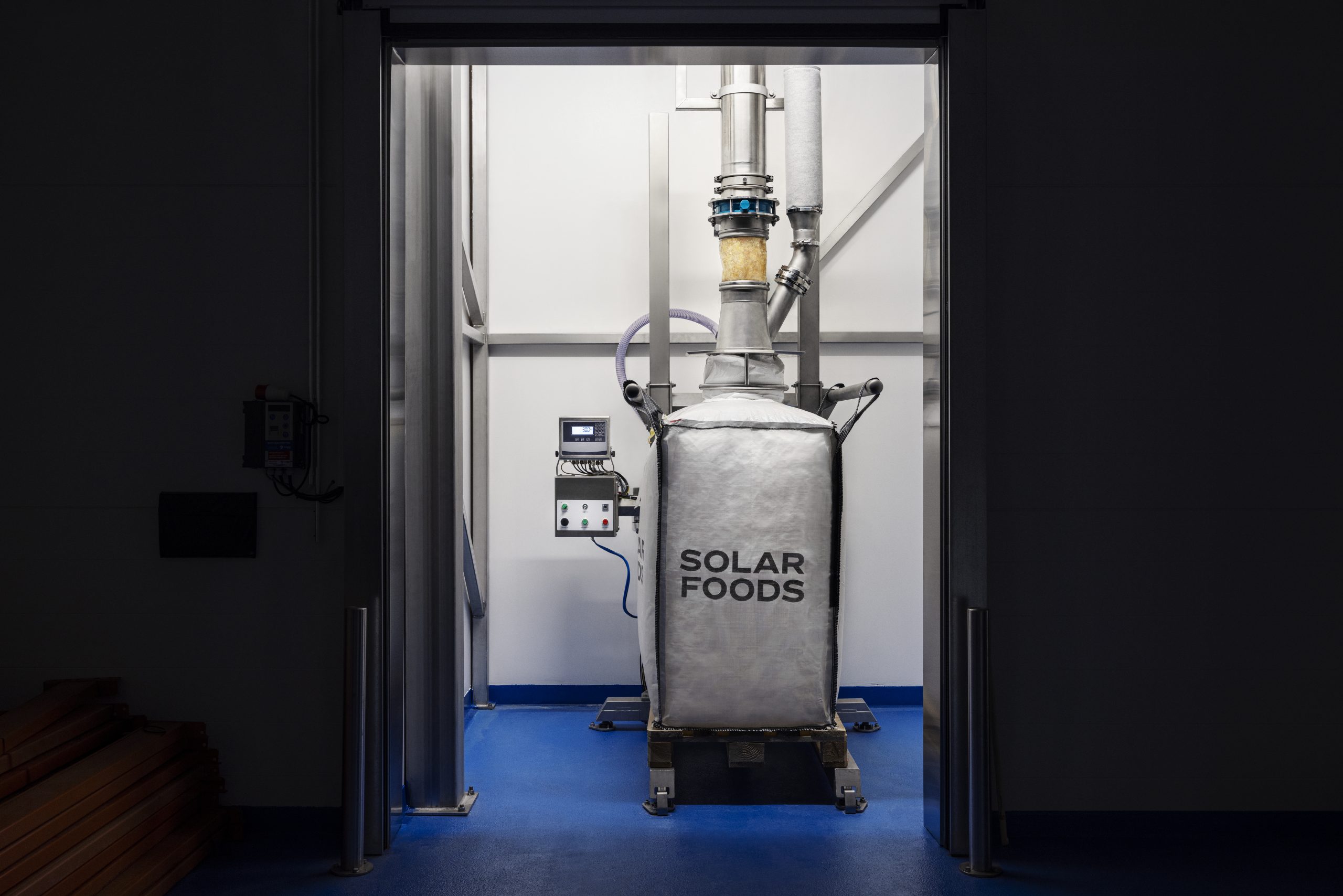 Why is yogurt the best remedy when a chili pepper sets your tongue on fire? This was one of the questions Swedish product developer Mats Nilsson asked himself when he wanted to know more about flame retardants, the chemicals that for decades have been added to everything from furniture and electronics to toys and clothing so fire doesn’t spread. Nilsson’s interest was sparked when a company—he declines to reveal which one—asked him and his team to develop a safer flame retardant.
Why is yogurt the best remedy when a chili pepper sets your tongue on fire? This was one of the questions Swedish product developer Mats Nilsson asked himself when he wanted to know more about flame retardants, the chemicals that for decades have been added to everything from furniture and electronics to toys and clothing so fire doesn’t spread. Nilsson’s interest was sparked when a company—he declines to reveal which one—asked him and his team to develop a safer flame retardant.
Finding a safe alternative is no luxury. The polybrominated diphenyl ethers (PBDEs) in conventional flame retardants can end up in the environment and ultimately our bodies. With regular wear and tear, products like cushions, curtains, cosmetics and computers tend to shed PBDEs, which are picked up by dust mites and easily transferred to people, especially infants and children who crawl through the house. Also, as household waste decomposes in landfills, PBDEs can leech into the water and eventually the food chain. The physiological effects of PBDEs are still unclear. What is certain, however, is they disrupt hormonal balance, which in turn can damage the reproductive and nervous systems.
“I considered it an original and intriguing challenge,” Nilsson says of the original assignment. It was 1997 and he was head of Trulstech Innovation, part of the Trulstech Group, an Australian firm with offices in the U.S. and Europe that conducts research into thermal energy. “The only affinity I felt for this issue was my past as a fireman,” Nilsson recalls. “I had gotten my firefighting diploma while I was a student and spent two years as a firefighter.” He says what he remembers best are the conditions in a burning building—and how fast flames can spread. “When it comes to putting out a fire, the important thing is finding the balance between extinguishing the fire and cooling down the danger zone.”
Armed with this experience, and questions about how tongues react to hot peppers, Nilsson became engrossed in the subject of flame retardants. “What I found was that when there’s a good balance between bases and acids, a great deal of heat energy can be absorbed,” he says. In chemistry, a base counters the effects of sour-tasting acids. In the right mixture, these chemicals can cause hot spots to cool. That’s what happens in your stomach when you swallow a hot pepper (a base) and cool it down by eating some yogurt (an acid).
“If you imitate those good chemicals in developing a new flame retardant,” Nilsson reasoned, “you prevent unfortunate side effects.” Nilsson wanted to see whether he could imitate nature by using the same chemical reaction that quenches the flames of a hot pepper to snuff out real flames.
So, together with his buddies at the Trulstech Group, Nilsson developed an environmentally friendly, non-toxic and extremely affordable flame retardant based on a mixture of the natural chemicals you find in citrus fruit, grapes and flour. The reasoning: Citrus juices have the same heat-quenching properties as the ingredients of yogurt and stomach acid. People have been eating these fruits for millennia, so we know that the chemical reactions in the stomach have no damaging effects. “If it’s based on a natural source, it’s got to be better than what’s out there now,” says Vyvyan Howard, professor of bioimaging at the Centre for Molecular Bioscience in Ulster, Ireland. “A basic rule of thumb is if it’s been around for millennia then we’ve evolved with it and we’re adapted to it. That’s a better bet than synthetic chemicals.”
The Swedes researched and tested their discovery but because they weren’t satisfied with the results and other work came their way, it was shelved. It stayed on the sidelines until Nilsson’s wife was seeking a submission for a Swedish environmental-product competition in 2003. The Molecular Heat Eater (MHE) made it to the final. Praise followed, leading to the product’s inclusion in the BBC World Challenge, a contest for ideas that “make a real difference to the world.” Much to their surprise, the Swedes reached the final in this competition, too. At that point, their revived researcher moved quickly. The team has since applied for a patent, further refined the product and initiated a sales-and-marketing plan.
The Molecular Heat Eater comes in powder, liquid and gel forms, and though the list of ingredients is, understandably, a business secret, MHE contains nothing you wouldn’t find in, well, citrus fruit, grapes and flour. When MHE is applied to fire as a foam, for instance, the mixture of bases and acids absorbs thermal energy, extinguishes the flames and cools down the burning material. MHE has so far been used in lightweight polyurethane (PU) foam in furniture and PU coating in carpets and wallpaper. Lab tests for latex, acrylic fibres, PVC plasticizers, wool and polycotton have been “meeting the customers’ demand,” Nilsson claims.
Despite the successful application of MHE, it’s only available on a limited scale. Why? “The market for flame retardants is in the hands of a couple of large companies, which jointly form an oligopoly [limited pool of competitors] and are in no way open to change,” Nilsson says. “Moreover, they claim their products are not toxic. These folks are very adept at manipulating politicians and the academic world.” The same companies have sponsored a lot of expensive research, he adds, so “they therefore literally keep certain institutes alive, and the scientists play up to them.”
Nilsson sighs as he recalls the vicious circle he experienced in attempting to market the product: A more healthy, environmentally friendly and cheaper flame retardant fails to break through because big chemical concerns see it as a dangerous competitor that can cut into their market position and profits. Nilsson has been bitterly disappointed by politicians who allowed their decisions to be guided by specialists—who were often scientists sponsored by the chemical industry. “Of course, the chemical industry… doesn’t want to give up its market share,” says the Centre for Molecular Bioscience’s Howard. “They don’t politely step aside and say, ‘What a jolly good idea.’ They will say it doesn’t work.”
Health concerns over the use of PBDEs have been prevalent since the 1990s. But it wasn’t until the European Union banned certain PBDEs in 2004 that chemical industry leaders looked for alternatives. Manufacturers like Great Lakes Flame Retardants, for example, introduced the Firemaster 550, while Albemarle Corporation launched its own substitute. Both products avoid PBDEs. Since then, some U.S. states, including California, Maine and Washington, have begun banning the sale of PBDEs.
So progress has clearly been made and Nilsson is optimistic about the potential growth of MHE. He says he’s been invited by major companies to give presentations this year. “We always offer to test [MHE] on their own products,” says Nilsson, “and our results always lead to very positive reactions.” Nilsson says even companies close to home—such as Sweden’s IKEA, which manufactures millions of pieces of furniture treated with flame retardants—are “very pleased” to notice that a harmless alternative exists.
Meanwhile, interest in MHE is growing fast in areas where the risk of fire is highest. Nilsson mentions Japan, Australia and California as places that are sensitive to fire due to arid conditions and earthquakes. So the market for alternative flame retardants like MHE is there. What’s not there yet, according to Nilsson, is the commercial and political will. “What’s important is that the producers of traditional flame retardants finally admit that they’re selling toxic substances and remove those substances from their products. And that politicians finally have the courage to stick their necks out and toughen up the rules.”
When that happens, former firefighter Nilsson will have one less blaze to put out.
Max Christern is the editor of the Dutch edition of Ode.
Photo: istockphoto.com/sbayram
Putting out fires with lemons
More of Today's Solutions
The case for taxing big fossil fuel firms: a solution for funding climate res...
A fresh report argues that imposing a tax on fossil fuel firms operating in the wealthiest countries may dramatically boost climate finance, delivering much-needed ...
Read MoreNavigating digital dating and modern relationships
Digital dating has changed the way we connect, creating a new vocabulary of phrases such as ghosting, orbiting, and breadcrumbing. While these activities may ...
Read MoreThese companies will cover employees’ legal abortion travel costs
Following the monumental overturning of Roe V. Wade by the US Supreme Court, residents of many states are facing the reality that they won’t ...
Read MoreHow to host a more sustainable super bowl party
This year, the Arizona Super Bowl Host Committee in collaboration with NFL Green is working together to make this year’s Super Bowl as sustainable ...
Read More










